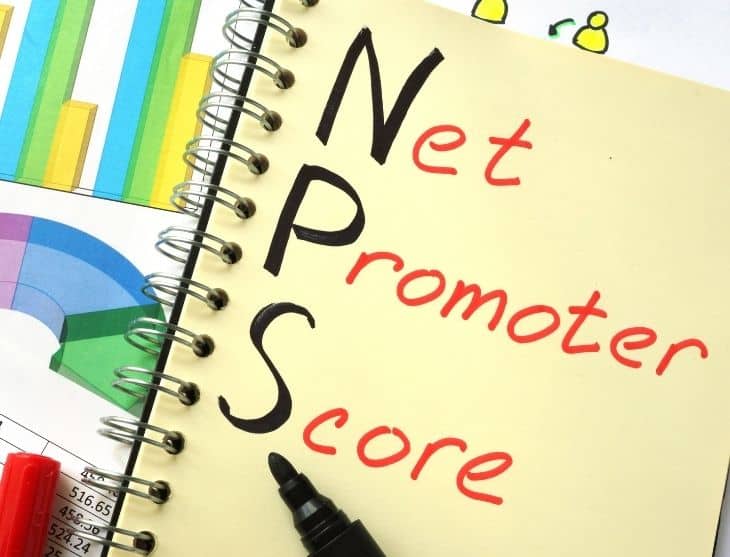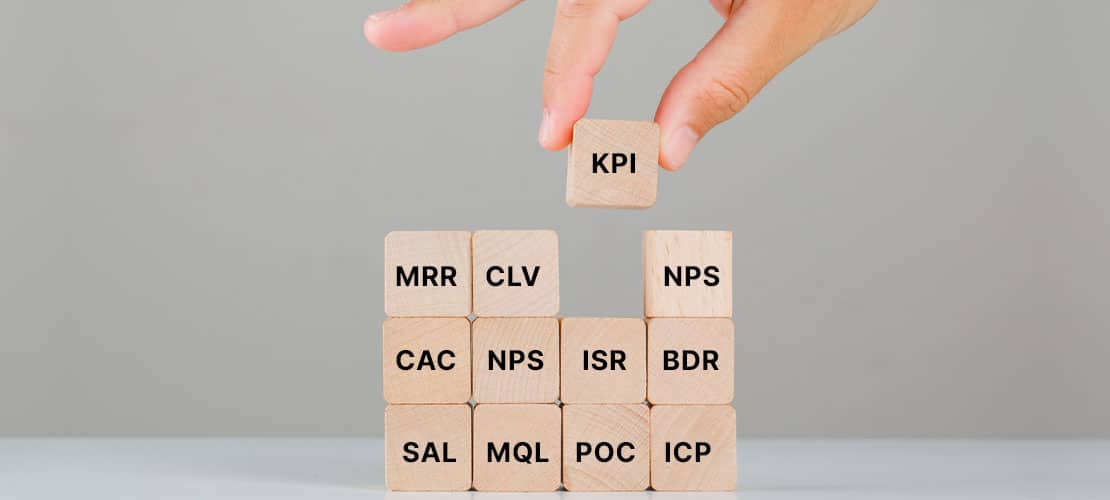You’re in the middle of your first sales meeting after joining a new team and are suddenly bombarded with terms you haven’t heard before. There is a significant number of terms and acronyms that a sales team may use. Some of these may make seasoned marketing and sales teams question what was said.
Understanding sales acronyms and terms that may be used in a meeting is essential, regardless of your experience as a sales rep. When you are in a meeting, you want to ensure you can keep up with the sales and marketing teams and provide feedback even when they mention sales jargon. Understanding these terms can also help you navigate your professional life more effectively.
This post is all about the various sales acronyms, jargon, and terms you may hear during a meeting or while talking to sales reps. We will cover some of the most commonly used and even some that you may only hear occasionally. This information will help you feel more educated during those initial meetings.
Important Sales Acronyms Used By A Sales Team
We will start by looking closely at sales acronyms that may be thrown around during a meeting. These usually come in the form of a few letters only – much like a letter in communication, these letters mean something. It is a powerful way to keep meetings short and to the point without wasting time with big words or explaining what every single term used means.
MRR (Monthly Recurring Revenue)
A general term used during the sales process is MRR. This is a type of sales acronym that refers to monthly recurring revenue. Just as the name suggests, it provides an overview of the business’s monthly revenue through the sale of either goods or services, guiding the course of a business’s financial planning.
Note that this is not the same as the annual recurring revenue but instead takes a shorter-term approach. Data collected by analyzing the MRR of a business provides valuable information related to the company’s current health. It can also assist in the compilation of financial trajectories.
CLV (Customer Lifetime Value)
Sometimes, this term is referred to as the user lifetime value or LTV. Both LTV and CLV are the same terms that can be used during a meeting with the sales team and management. It refers to the overall value that a specific person (customer) has offered the business thus far.
This is an excellent measurement to use when the company focuses on customer relationship management and building relationships with every client added to the database. It is not a measurement used when the buying process occurs once and you do not hear from the customer again. This data can give you more details about which customers have the highest value on your database.
CAC (Customer Acquisition Cost)
The cost to acquire a single customer is an essential metric that businesses must keep an eye on. This particular figure is described as CAC. When discussing setting up a budget for campaigns, a marketing team often mentions these sales acronyms. Leveraging social media channels can significantly influence CAC by enhancing customer interaction and promoting products or services more effectively.
A sales-qualified lead needs to cost the company as little as possible, which is why it is a measurement often discussed by sales teams. The CAC is often compared to factors like the customer’s lifetime value. This can help the sales teams understand whether or not the company is turning a profit based on how much it costs to obtain new customers. The lifetime value of a customer needs to surpass the acquisition costs.
NPS (Net Promoter Score)
NPS is also among the popular sales acronyms you may hear during these meetings. It refers to the net promoter score. You must keep this multi-point system in mind to assess how customers feel about the business. There are 10 specific points used to determine the net promoter score. This includes identifying your customers’ happiness and loyalty toward the company.
The NPS is then used to determine which customers would likely be able to provide referrals for your company. The NPS is often also used to determine which customers are unsatisfied with the company – you then need to pay attention to your customer relationship management software strategy to ensure their concerns are addressed before they move over to a competitor.

SDR (Sales Development Representative)
The sales development representative is also sometimes called the sales reps. These are representatives of the company that are often involved in the process of following up with leads and converting them into clients. They create the sales-qualified lead for the company based on the lead acquisition strategies that are in place.
There are both inbound and outbound SDRs or sales reps. Inbound leads are sent to an SDR that focuses on working with sales internally. To secure leads and sales, outbound sales reps will visit physical locations outside the business.
ISR (Inside Sales Representatives)
An inside sales representative generally forms part of the sales team. They will generally handle leads sent to the business through a sales funnel, landing page, online form, email, or phone call.
BDR (Business Development Representative)
A business development representative is quite similar to a sales development representative. A BDR, however, often mainly focuses on face-to-face interactions with customers. They will usually be out in the field implementing sales processes to generate new customers for the business.
KPIs (Key Performance Indicators)

One of the most referenced factors when it comes to the figures related to sales is the KPIs or key performance indicators. It is an umbrella term that refers to various metrics that a business must rely on to forecast its current health accurately. Each key performance indicator plays a specific role.
Activities, objectives, and results are the three main categories companies use to set out an overview of these performance indicators. It is essential to focus on results when setting up a KPI report and consider the other two categories, as they play an equally important role.
SAL (Sales Accepted Lead)
A sales accepted lead generally means a lead that has evolved to the stage where they are ready to come inbound. There are different ways in which companies can determine when a lead should be marked as a SAL.
This sales lingo is something that you may note when the team talks about customers who they are about to onboard. Many companies mark a SAL when customer interactions result in meeting acceptance.
MQL (Marketing Qualified Lead)
When a customer is marked as a marketing-qualified lead, it means they have shown interest in the product or service but haven’t made any decisions yet.
The sales lingo refers to factors like a lead asking for a demo. The lead is not yet ready to be classified as a SAL but still represents a prospective customer.
CW & CL (Initial Letters)
A lead may be marked with CW or CL during the sales pipeline. In the case of CL, it means that the lead was lost. CW, on the other hand, means that the lead has been won and is now among the company’s existing customers.
ICP (Ideal Customer Profile)
Every successful business owner can agree that the target audience and knowing who you are marketing to is critical. When you do not thoroughly understand the target audience, it is harder to secure a prospective customer.
The ICP, or Ideal Customer Profile, basically sets out a range of details about who the ideal customer is for your business. It is an incredibly valuable tool when you want to create a buyer persona to use in your marketing efforts. You will find that obtaining marketing-qualified leads is easier when you have set up an ideal customer profile system.
CRM (Customer Relationship Management)
CRM, or customer relationship management, is another common sales lingo you often hear. It refers to software that assists in the management of customer data.
The sales acronym is often associated with platforms like SalesForce and HubSpot, as these are two of the most prominent vendors in the market. These systems are beneficial in the entire sales process.
They can often also integrate with a sales funnel to help automate specific processes, such as capturing client data and associating the information with any sales that come through.

POC (Proof of Concept)
Some sales acronyms are primarily known in enterprises, including POC or Proof of Concept. Proof of concept is required when a large buying team first wants to look closely at what they are buying into.
Sales Terms And Jargon That You Should Know
Now that we have taken a closer look at some of the acronyms you may come across, there are a few terms you may also not understand. Some of these terms have historical roots, tracing back to Old English and other languages. We will assess some of these terms in this section of the article.
Sales Pipeline
The sales pipeline gives you a view of a lead’s current position in the sales process. The term ‘pipeline’ has a germanic origin, reflecting its historical roots and evolution over time. It records all data from potential buyers entering your database as a lead. Several levels or stages make up the sales pipeline.
It usually starts at initial contact and ends at closure. During the sales pipeline, marketing and sales teams take the lead from initial contact through qualification, meeting, and the final proposal.
Sales Funnel
The sales funnel refers to your strategy to achieve that first contact with the customer. It is not directly part of the marketing strategy, but rather the landing page that the company uses once advertising systems get a visitor onto the website.
The sales funnel can be simple, consisting of a basic landing page that asks the client for their name and email address. Some companies also take a more advanced approach to offer better diversity for potential customers that visit the landing page.
Sales Gamification
Many companies have recently started looking at ways to add to their business strategy.
This generally refers to creating game-based elements that encourage more people to choose the company’s products and services over the competitor. Sales gamification may involve offering customers rewards for their purchases, for example.
BANT
BANT is a term that refers to budget, authority, need, and timeline. It is essentially a type of qualifying system that sales reps will use to determine which leads should get priority.
It tells whether a specific lead has the budget and authority and the time and requirement for the product or service you have to offer them.
Brag Book
You may sometimes hear sales reps talk about their “brag book” yet not feel sure about what they are referring to. It is a customer satisfaction metric that the rep carries with them.
These books generally contain case studies and testimonials that previous clients have provided to the rep after a well-done job. The brag book can be an essential part of the sales process for the rep, as they can present it to potential new customers during their meeting.
Bluebird
When the term “Bluebird” is directed at you, it is something that you should feel very excited about. This refers to a type of sales opportunity that falls onto you without needing a significant amount of effort. An outbound sales rep secures a lead and then hands you the opportunity to close it.
Bottom of the Funnel
As soon as a prospect enters the area considered the bottom of the funnel, you should be extra careful and pay close attention to them.
At this point, the customer has made contact and when through both a qualifying phase and meetings. It is now time to close the sale. Thus, ensure you understand the critical role of the funnel’s bottom.
Buying Signals (Interest)
It is also essential to understand what buying signals mean. These are generally verbal or non-verbal cues showing interest in closing a deal from the customer.
At this point, consider the service level agreement and track customer interactions to ensure you can get them onboard.
Draw
When you are offered a draw, the company is willing to provide you with an advance on the commissions you will earn for sales you bring in.
It is common for companies to offer a draw to newer members of a sales team who show a lot of promise. You will not receive any further commissions until the funds provided to you have been paid in full with the commissions you earn.
Sales Conversations Optimized
If you ever find yourself in a situation where you do not know the terms that a sales team talks about, you may feel embarrassed to ask. Yet, this could lead to you misunderstanding your assignment or missing out on a significant lead. The terms and sales acronyms we covered in this post give you a good starting point to ensure you can keep track of what is said during those important sales meetings. While there are other terms that you might want to learn about, these will also lay a solid foundation to start with.
Book a Demo today to see how Spinify can help optimize your sales team’s performance.





